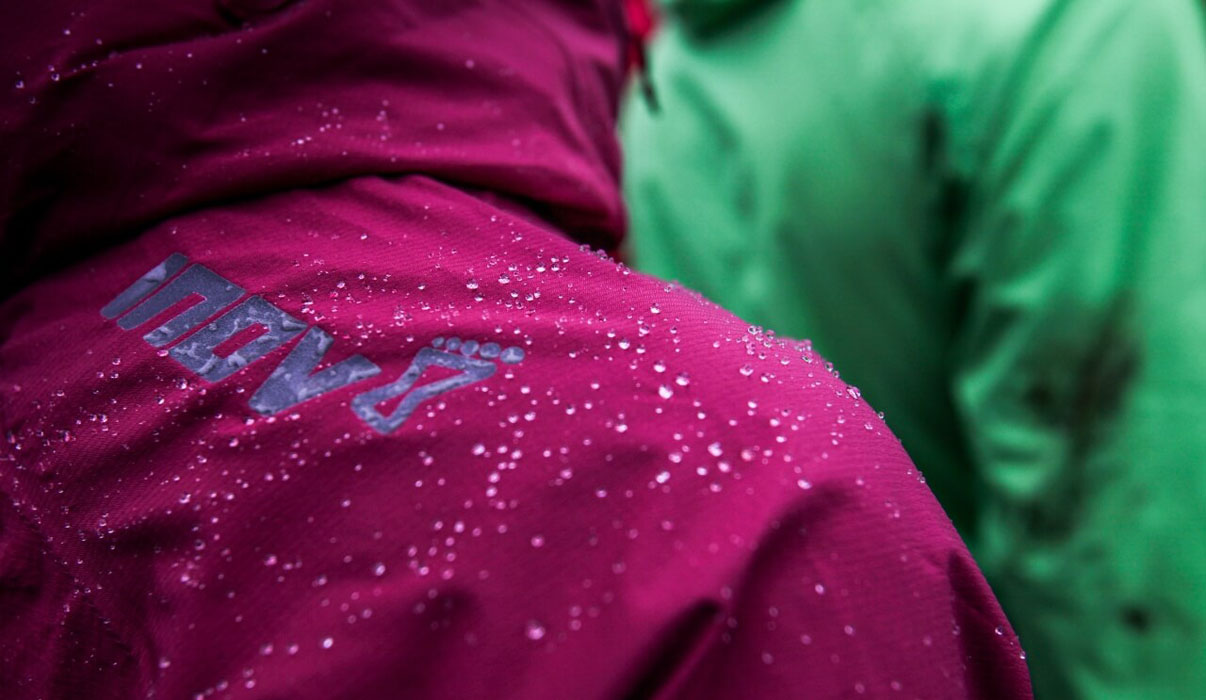
Rain shouldn’t stop you getting out on your run, nor make it a miserable experience. When it comes to running in the rain Benjamin Franklin sums it up nicely: “By failing to prepare you are preparing to fail!”
If it’s raining already, it looks like it might, or even if it’s not forecast at all – be prepared! Taking some time before your run to think about what you’re wearing and what you need to carry, will make for a much more enjoyable run. Here we give you our 12 top tips for running in the rain, sprinkled throughout with wisdom from our athletes and ambassadors. The tips are particularly useful for runners hitting the trails, but many apply to those running on the roads too.
1. Don't run in a thunderstorm
Lightning strikes do happen – and are statistically more likely than you winning the lottery! So don’t go out in a thunderstorm, or if a storm is forecast.
Instead consider postponing your run until later in the day, running on the treadmill, cross training on an exercise bike or elliptical, or doing some strength and conditioning work.
If you’re caught in a thunderstorm while on your run:
- Find shelter if you can
- Quickly get down from high ground to a low-lying open area
- Keep away from trees or metal poles
- Don’t lie on the ground. Instead get into a low squat, touching as little of the ground as you can
2. Adjust your route
Be realistic with yourself. Will the route you had planned still work? You’re unlikely to be able to run as quickly in the rain too.
Adjust your route if you want to avoid muddy, waterlogged, or boggy ground… or put on some X-TALON shoes and embrace it! Can a faster session be modified/switched to fit with the conditions? Rain is an opportunity for a fun, impromptu session – maybe a rigid, structured session can become a fartlek instead?
However, picking a route you haven’t run before on high ground or technical terrain is not a great idea.
3. Pick the right shoes for the job
In heavy rain, your shoes are going to get a soaking – they’re going to take a few days to dry out. Consider running in an older or lesser used pair of shoes. Ideally you should have a couple of pairs of running shoes on rotation, so one pair can dry properly while the other is being used.
If you’re heading onto the trails and it’s soft/wet underfoot, think about the grip you’ll need. Trail shoes with longer studs will bite into the softer ground and help you stay upright. Our ROCLITE shoes have 6mm long studs and our X-TALON shoes have 8mm studs.
If you like the idea of keeping your feet dry, then waterproof shoes are good choice. Our ROCLITE G 315 GTX V2 shoes boast GORE-TEX protection to stop water getting in.
Find out more about how to wash and dry your shoes after running.
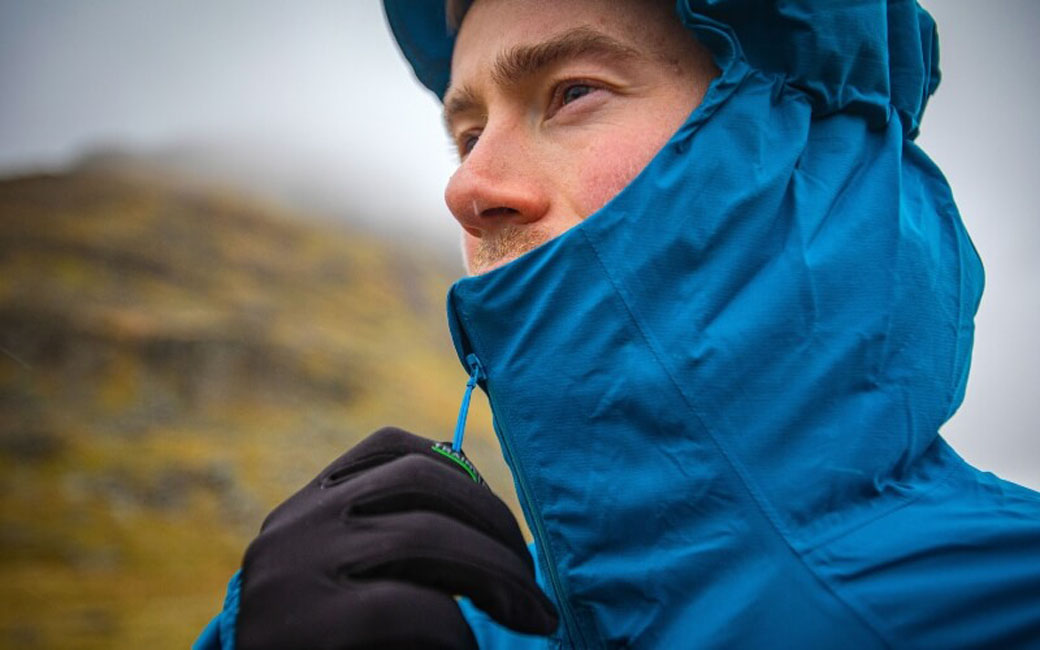
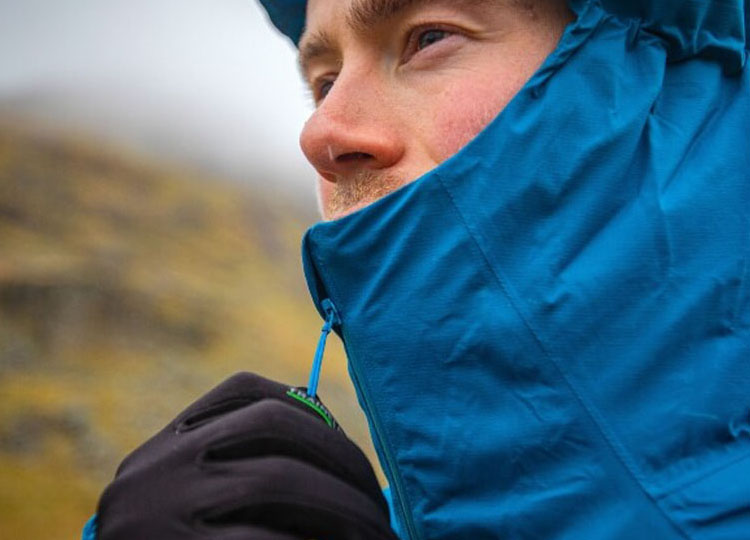
4. Wear a cap & use your hood
When we asked our athletes about their best tips for running in the rain, this one was mentioned by nearly all of them.


“Wear a cap under your hood, it’s amazing what a difference it can make to your mood when the rain isn't blowing into your eyes.”
Andy Berry
The RACE ELITE PEAK 2.0 is a great choice here – it’ll keep your vision clear on those rainy runs, but also provides UPF 30+ protection from the sun in summer too.
5. Get your jacket on - double up if you have to!
It goes without saying that a waterproof jacket is a good idea in heavy rain. Ideally your jacket should be fully waterproof and have a hood for extra protection (the STORMSHELL V2 is a solid choice if you need a new running jacket).
However, some our athletes have some less obvious tips too…


“Wearing a long-sleeve base layer under a waterproof jacket makes it more effective.”
Damian Hall


“A thicker walking-style jacket is perfect for persistent rain, sometimes over a thin running waterproof for double protection.”
Sarah Perry


“Use an older waterproof over your backpack to take the brunt of the weather and help keep your stuff dry.”
Andy Berry


“Wear your rain jacket halfway unzipped to show your race number.” Note: alternatively the unisex RACESHELL running jacket is semi-transparent, and is designed so your race bib remains visible through the waterproof."
Nicholas Turco
6. Waterproof trousers?
Consider wearing waterproof trousers, particularly for longer trail runs or races where you’re more exposed. It all depends on the length or intensity of your run, as well as your own personal preference.


“Naked legs dry quicker than wet tights.” Note: Damian still advocates wearing shorts!
Damian Hall
7. Limit the chafing
Wet weather has a tendency to make clothing rub more, especially on longer runs when you’re exposed for a greater length of time. Before you head out apply anti-chafe cream to any likely problem areas. Thankfully our designers take such things into consideration and thus much of our clothing uses soft-feel materials and has limited seam irritation points.
8. Carry spare socks on longer runs
If you are doing a very long run, it can be helpful to carry a spare pair of socks to change into halfway through. Changing into dry socks can give a helpful morale boost, but more importantly will help stave off blisters. Remember to put your dry socks in a protective bag before stashing them in your waist pack or hydration vest.
9. Keep your phone in a plastic bag
While commercial waterproof phone cases are available, a simple, protective bag will do the job too. Remember if you don’t take a rain selfie for Strava, did the rainy run even happen?


“Stick your phone in a dog poo bag to keep it dry in your race vest or bumbag. It might not look all that cool, but it does the job.”
Tom Roger Adams
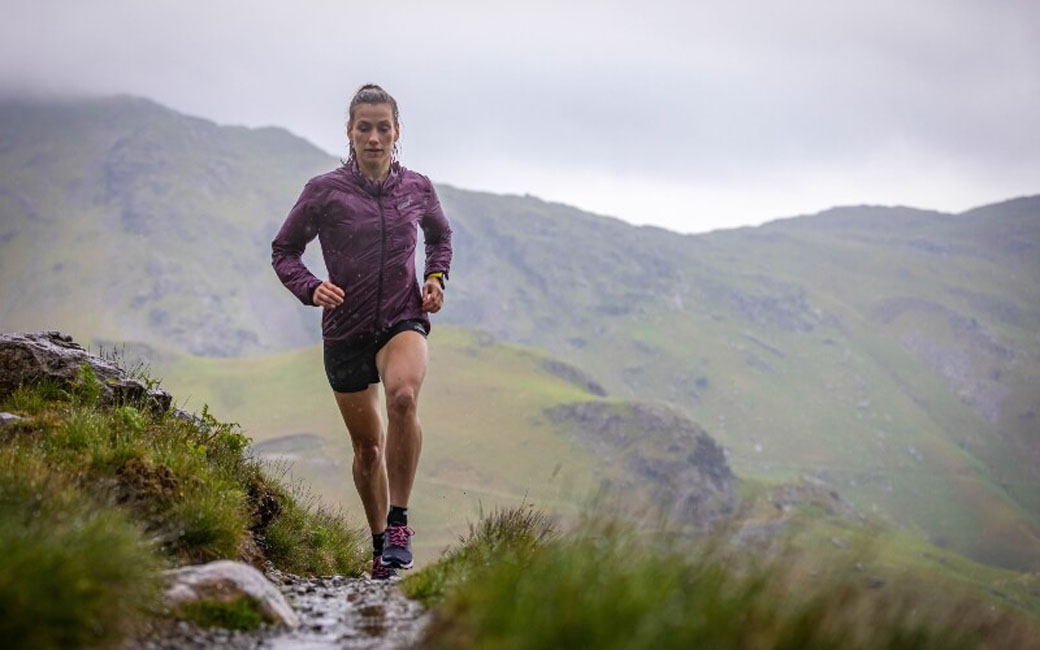
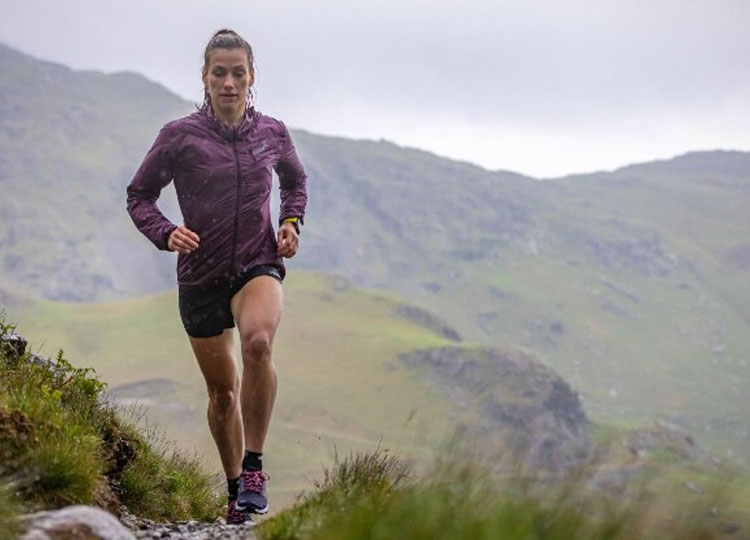
10. Prepare in case things go wrong
Heavy rain during a long run on an isolated trail can be… an experience! Poor visibility and slick rocks can cause issues. If things do go wrong, it pays to be ready – carry a phone and a way to stay warm if you’re forced to stop running.


“I usually carry a small bivvy bag on long runs. They weigh less than 100g but can save your life if things go wrong.”
Tom Roger Adams
11. Be aware of low visibility for other road users
Never assume you can be seen. Heavy, bouncing rain reduces visibility and this can be dangerous, particularly if you’re running on roads.
Wear bright colours and reflective running gear, use a head torch and a rear running light.
If a car is coming close and you’re not sure the driver has seen you, step off the road for a second and let it pass.
12. Have warm clothes & a towel ready for when you get back
When you stop running, you’ll quickly get cold. Before you head out get some warm clothes and a towel together so you can quickly change. Some newspaper to stuff in your wet shoes is a good idea too (take the insoles out first to help them dry quicker).
